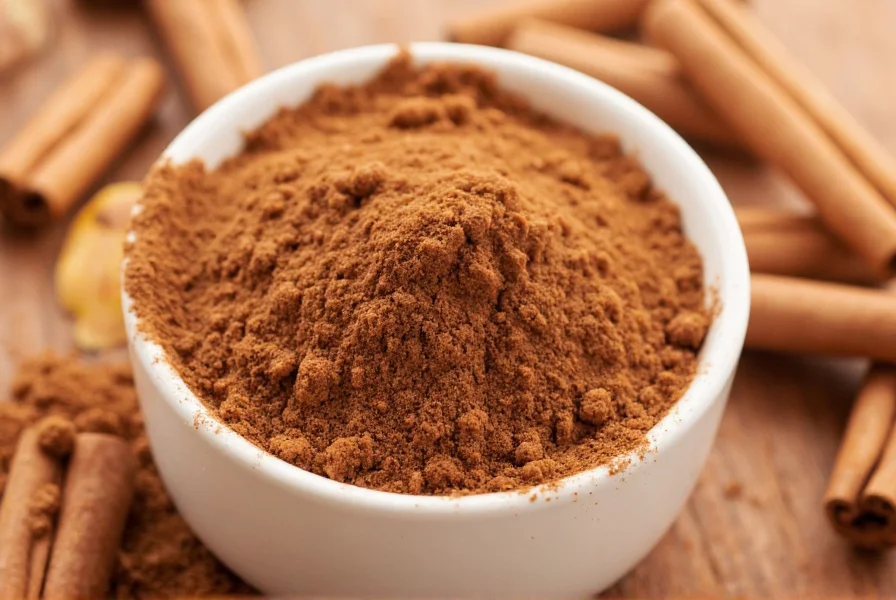Current scientific evidence suggests that cinnamon may have modest blood sugar-lowering effects in some individuals, particularly those with type 2 diabetes, but the results are inconsistent across studies. The effect appears to be relatively small compared to standard diabetes medications, and cinnamon should not replace prescribed treatments. More high-quality, long-term research is needed before definitive conclusions can be made about cinnamon's effectiveness for blood sugar management.
For people exploring natural approaches to support blood sugar control, cinnamon has gained significant attention. Understanding whether does cinnamon lower blood sugar levels requires examining the scientific evidence behind this popular claim. While some studies show promise, it's crucial to separate preliminary findings from proven medical treatments.
The Science Behind Cinnamon and Glucose Metabolism
Cinnamon contains bioactive compounds, particularly polyphenols, that may influence how the body processes glucose. Researchers believe these compounds could potentially improve insulin sensitivity and slow carbohydrate breakdown in the digestive tract. However, the exact mechanisms remain under investigation, and human studies have produced mixed results.
What Research Says About Cinnamon for Diabetes Management
Multiple clinical trials have examined cinnamon's effects on blood sugar markers. A comprehensive review published in the Journal of the Academy of Nutrition and Dietetics analyzed 16 studies and found that cinnamon supplementation (typically 1-6 grams daily) resulted in modest reductions in fasting blood glucose levels, with effects ranging from 3-29 mg/dL. However, the quality and consistency of these studies varied significantly.
| Study Duration | Cinnamon Dosage | Average Blood Sugar Reduction | Study Quality Rating |
|---|---|---|---|
| 8-12 weeks | 1-3 grams/day | 3-15 mg/dL | Moderate |
| 4-6 weeks | 6 grams/day | 18-29 mg/dL | Low |
| 12-18 weeks | 2 grams/day | No significant change | High |
Notably, a high-quality 2020 systematic review in Cochrane Database of Systematic Reviews concluded that current evidence doesn't support recommending cinnamon as an effective treatment for type 2 diabetes due to inconsistent results and methodological limitations in existing studies. The researchers emphasized that any potential benefits appear modest at best.
Different Types of Cinnamon and Their Effects
Not all cinnamon is created equal when considering best type of cinnamon for blood sugar management:
- Ceylon cinnamon ("true" cinnamon) - Contains lower levels of coumarin, making it safer for regular consumption
- Cassia cinnamon - More common and less expensive, but contains higher coumarin levels that may cause liver issues with prolonged use
Most studies showing potential benefits used Cassia cinnamon, but health professionals often recommend Ceylon for regular use due to safety concerns. When evaluating cinnamon supplements for glucose control, check which type is used and whether coumarin content is disclosed.

Practical Considerations for Cinnamon Use
If you're considering adding cinnamon to your diabetes management plan, keep these points in mind:
- Dosage matters - Studies showing effects typically used 1-6 grams daily (about 1/2 to 2 teaspoons), but optimal dosage remains unclear
- Consistency is key - Effects, if any, likely require regular consumption over weeks or months
- Monitor your levels - Track blood sugar before and after adding cinnamon to assess personal response
- Safety first - High doses or prolonged Cassia cinnamon use may cause liver issues due to coumarin content
How Cinnamon Compares to Established Blood Sugar Management
While researching how much cinnamon to lower blood sugar, it's essential to understand that any potential effect is significantly smaller than proven medical treatments:
- Metformin typically reduces HbA1c by 1.0-2.0%
- Lifestyle changes (diet/exercise) can reduce HbA1c by 0.5-2.0%
- Cinnamon studies show average HbA1c reductions of 0.1-0.5% at best
These modest potential benefits mean cinnamon should be viewed as a possible complementary approach, not a replacement for evidence-based diabetes treatments. The American Diabetes Association doesn't currently recommend cinnamon as a standard treatment due to insufficient evidence.
When to Consult Your Healthcare Provider
Before adding cinnamon supplements to your routine, especially if you have diabetes or prediabetes, consult your healthcare provider. Cinnamon may interact with certain medications, particularly those affecting blood sugar or liver function. Your provider can help you determine if cinnamon might be appropriate for your specific situation and monitor for any potential interactions or side effects.
Remember that effective diabetes management requires a comprehensive approach including medication (if prescribed), diet, exercise, and regular monitoring. While exploring natural options like cinnamon can be part of your strategy, they should complement—not replace—proven treatments.
Conclusion: A Balanced Perspective on Cinnamon and Blood Sugar
The question of whether cinnamon lowers blood sugar doesn't have a simple yes or no answer. Current evidence suggests possible modest benefits for some individuals, but these effects are inconsistent and generally small compared to standard diabetes treatments. More rigorous, long-term studies are needed to determine cinnamon's true effectiveness, optimal dosage, and which individuals might benefit most.
For those interested in natural approaches to support blood sugar control, cinnamon may be worth discussing with your healthcare provider as part of a comprehensive management plan. However, it's crucial to maintain realistic expectations and prioritize evidence-based treatments that have demonstrated significant benefits for diabetes management.










 浙公网安备
33010002000092号
浙公网安备
33010002000092号 浙B2-20120091-4
浙B2-20120091-4